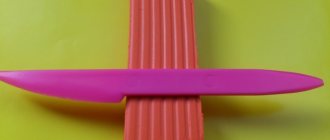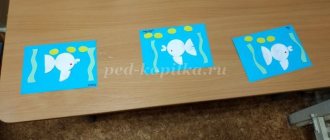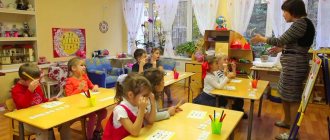Plasticine pets
In order to start sculpting animals, you must first decide what kind of animal you want to depict.
Try to clearly imagine the image that will be embodied using plasticine. Children, as a rule, choose pets to sculpt. This is due to the fact that they see them quite often, unlike wild ones. Usually, any animal begins to be sculpted from the head. To create it, you need one large ball for the base and two smaller ones for the ears. Next, the required shape is created from these balls.
Eye placement is also important. They should be positioned so that the animal is looking directly at you. Balls are also prepared for the body, paws and tail, if, of course, there is one. An important point will be the connection of all elements into one whole. You can use matches or toothpicks for this. If you use medium-soft plasticine for modeling, you can subsequently play with these animals, creating various storylines involving pets.
Preparing for sculpting
Before you start learning how to make animals from plasticine, you should take care of preparing your workplace. The surface of the table at which modeling will be done should be well lit. In addition, you should protect your workplace from plasticine. It is for such purposes that special boards are used. But if you don’t have one, you can simply cover the table with a piece of oilcloth so as not to get it dirty. For kids, you can stock up on various shaped molds, and then sculpting animals from plasticine will become an even more exciting activity. You can also purchase special gloves for handles so that the plasticine does not rub into the skin during work.
Summary of a lesson with children of the second junior group on modeling “Vitamins for animals”
Modeling lesson for children of the second junior group “Vitamins for animals”
Description:
This material will be useful and interesting to teachers of younger groups and parents.
The lesson requires preliminary preparation. Goals:
- developing children's interest in modeling;
— familiarization with the properties of plasticine; - introduction to a new toy; — consolidating children’s knowledge about vitamins and their benefits. Objectives:
- continue to develop skills in working with plasticine;
- continue to develop knowledge about primary colors; - promote the development of aesthetic perception; - develop the ability to listen carefully to the teacher; - develop gross and fine motor skills; - strengthen children’s ability to tear small pieces from a large lump, roll balls and flatten them; - cultivate accuracy in work; — cultivate sympathy for someone else’s misfortune and a desire to help. Preliminary work:
reading K. Chukovsky “Doctor Aibolit”, a printed board game “Vegetables and Fruits”, looking at illustrations for the work of K. Chukovsky “Doctor Aibolit”, talking with children about a healthy lifestyle.
Equipment:
plasticine, board, napkins, paper blanks for a doctor’s suitcase, soft toy fox, printed board game “Vegetables and Fruits.
Assemble the puzzle”, a treat for children - apples. Progress of the lesson:
Children sit on chairs.
A knock is heard on the door. The teacher opens the door, and there is a fox. Chanterelle:
Guys, Doctor Aibolit sent me to you!
We're in trouble! Aibolit has run out of vitamins. Children:
What are vitamins for?
Educator:
Vitamins help children and adults to be strong and healthy.
Some vitamins are needed for growth, others - for the eyes - to see well, others - for the head - to think well, to be smart. And there are vitamins that protect us from diseases. If a child does not receive enough of these vitamins, he begins to get sick often. What do you think, at what time of year do we get the most vitamins? Children:
In summer and autumn, because there are a lot of fruits and vegetables at this time.
Chanterelle:
Well done guys!
You know a lot. And I know the game. Do you want to play? Children:
Yes.
The fox and the guys are playing the game “Put the puzzle together.” They collect various vegetables and fruits, and the teacher helps. Educator:
Guys, do you know that at other times of the year, so that people do not lack vitamins, vitamin tablets are sold in pharmacies.
And Doctor Aibolit ran out of such vitamins. Well guys, let's help Aibolit? Children:
Of course, we will help!
Educator:
Let's make some vitamins and put them in these suitcases.
And the fox will give it to Aibolit. The suitcase has compartments for vitamins, they are of different colors. What color vitamins will we make? Children name the colors drawn on the blank. The teacher shows the procedure. Children look carefully and show movements in the air. Educator:
We pinch off a small one from a large lump of plasticine, roll it into a ball in a circular motion and flatten it.
It turned out to be a vitamin. This is how I do the rest of my vitamins. (pronunciation and execution) Children look at the prepared material in front of them and begin to work at the prompting of the teacher. The teacher helps the children. In the middle of the lesson, the teacher conducts gymnastics for the eyes: We close our eyes tightly, count together to five, open them, blink and continue to work. Educator:
Our eyes rested a little.
Let's finish the job. Children finish modeling. The teacher and the fox conduct physical exercise. Our hands can clap - clap, clap. Our hands can slap - slap, slap. You can raise your arms up, you can shake them, knock with your fists, wave your wings, you can put your hands on your belt and make them dance with lanterns. You can shake hands with everyone and gather a big circle. Educator:
Well, guys, let's play.
Let's look at our vitamin cases. (look at the suitcases and discuss the work done) Educator:
we will show our suitcases with vitamins to our parents, and then send them by mail to Doctor Aibolit.
We exhibit our works at the stand. Chanterelle:
Guys, I really liked your place, can I stay?
Children:
Yes! The fox treats everyone with apples.
Wild animals made of plasticine
The wildlife world is beautiful. It is filled with secrets and riddles. Children are drawn to the mysterious and unknown, which means they will probably be interested in how to mold animals from the wild world from plasticine.
Using modeling from plasticine, the child learns about the world and does it easily and with passion. For a more fruitful process, you can use a photo of an animal as an example or watch a video about its life in natural conditions. The process of sculpting representatives of wildlife is, in fact, no different from that when creating pets. Wild animals made from plasticine do not have to be an exact copy of their prototypes.
By showing your imagination and using different types of plasticine, for example, with glitter, you can create truly fabulous creatures. You can also add natural materials to the process. Thus, the process of studying wild animals is quite exciting. And from the resulting inhabitants of forests, deserts and mountains, you can assemble a whole zoo for the game.
Peppa Pig made from plasticine
For many children, Peppa Pig has become a favorite cartoon character. They will certainly be interested in making it out of plasticine themselves. Moreover, this work is not at all difficult.
Manufacturing stages:
- Roll the red and pink mixture into balls.
- Press the red piece onto the work surface, then use your fingers to pull out the flat side to form the hem of the dress.
- Make a small hole on top.
- Deform the pink ball slightly, extending the wide nose.
- Stick eyes on top.
- Decorate the nickel and mouth with red stripes.
- Glue the ears to the top of the head.
- Connect the head and torso.
- Mold the arms and attach them to the body.
Glue the tail to the back.
How to choose the right plasticine
Plasticine is different from plasticine. In order for the work process to bring only pleasure, you need to choose the right plasticine. If you will be modeling with children, it is better to choose a plasticine substitute. This is a special mass for modeling that does not need to be kneaded before use. It also has pleasant fruity scents. This mass is completely incapable of harming a child, even if he decides to chew it.
Its only drawback is that it dries quickly when exposed to air. For older children, you can completely use regular plasticine. It comes in soft, hard and medium soft. Soft plasticine does not hold its shape for long and collapses under the influence of its own weight, while hard plasticine is practically impossible for a child to knead. It follows from this that medium-soft plasticine is best suited for modeling. It is better not to use hard plasticine when working with children.





